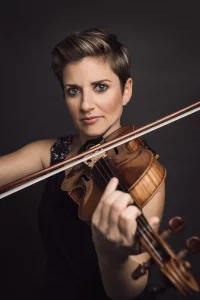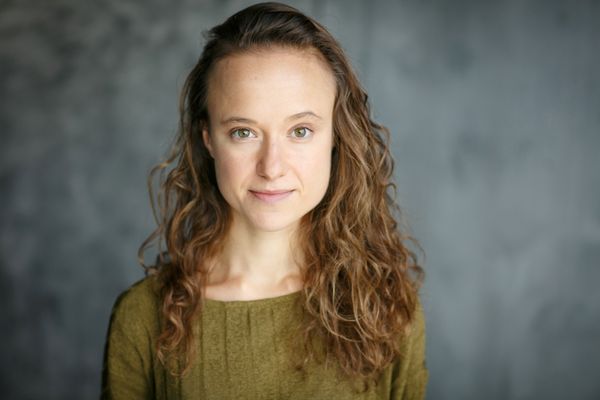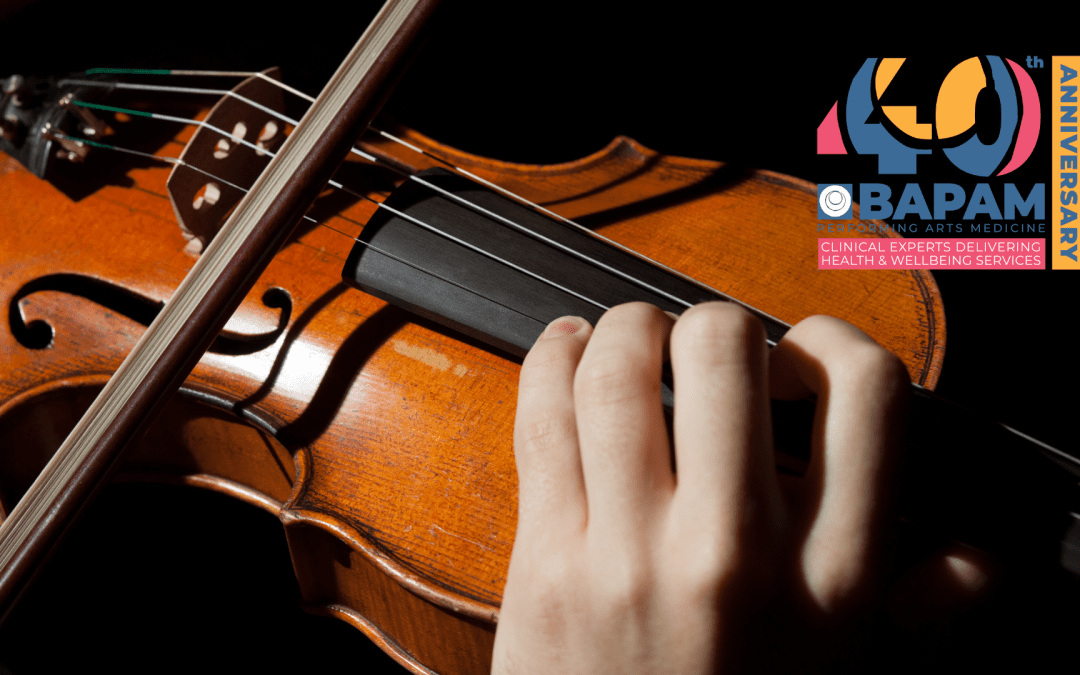 Berenice Beverley Zammit is a Performance Consultant, researcher, lecturer and professional violinist. Berenice lectures in Performance Psychology, Music Psychology, Dance Science and Research Methods at Trinity Laban Conservatoire of Music and Dance, and at Bath Spa University. At the Royal College of Music (RCM) Berenice has also taught on the modules for Performance Psychology, Arts in Health and Wellbeing, Healthy Musician, and Performance in Education. Her PhD at the RCM investigated performance optimisation through pre-performance routines and strategies.
Berenice Beverley Zammit is a Performance Consultant, researcher, lecturer and professional violinist. Berenice lectures in Performance Psychology, Music Psychology, Dance Science and Research Methods at Trinity Laban Conservatoire of Music and Dance, and at Bath Spa University. At the Royal College of Music (RCM) Berenice has also taught on the modules for Performance Psychology, Arts in Health and Wellbeing, Healthy Musician, and Performance in Education. Her PhD at the RCM investigated performance optimisation through pre-performance routines and strategies.
Berenice works with both performing artists and athletes on mental and physical strategies to optimise performance. Berenice is also a Consultant for various performing arts and sports institutions such as the European Youth Orchestra (EUYO), the Malta Philharmonic Orchestra, and Malta Rugby, on Performance Optimisation and Health and Wellbeing. She has led healthy practice training sessions for BAPAM and also works with the BAPAM team supporting our Directory of Practitioners.
Before turning her hand to Performance Science research and consultancy, Berenice entered the world of elite musicianship at age 13, with her solo debut of Vivaldi’s Four Seasons at Malta’s Manoel Theatre.
–
 Tahlia Norrish is an Australian/British actor, writer, and actor coach. After graduating from both The Liverpool Institute for Performing Arts and Rose Bruford College, Tahlia founded The Actor’s Dojo — a coaching program pioneering peak performance and holistic well-being for actors — where she remains the Head Coach. Tahlia is currently an MPhil Candidate at the University of Queensland’s School of Sport Science
Tahlia Norrish is an Australian/British actor, writer, and actor coach. After graduating from both The Liverpool Institute for Performing Arts and Rose Bruford College, Tahlia founded The Actor’s Dojo — a coaching program pioneering peak performance and holistic well-being for actors — where she remains the Head Coach. Tahlia is currently an MPhil Candidate at the University of Queensland’s School of Sport Science
–
Tahlia Norrish: You made your solo debut at 13 and are still an in-demand violinist. Can you give us a little insight into your journey as a performer?
Berenice Beverley Zammit: The earliest memory I have is being fascinated by the violin. The only way my mother could make sure I was quietly sitting down was when she had an orchestra playing on TV. I remember being drawn to the left side of the orchestra because facing the orchestra, that’s where the violins are. I remember wishing she would send me to violin lessons because both her and my sister played the piano and I thought she’d maybe want me to follow in their footsteps. Luckily, my wish came true. So, I started at 3 1/2 years old. I played in various solo concerts for kids, youth orchestras, on national television, attended various master classes, and then my debut came at 13 playing Vivaldi’s “Four Seasons” in Malta’s national theatre, the Manoel Theatre.
At that age, I had also started playing with the Malta Philharmonic Orchestra. And then I went from strength to strength. I won a scholarship to further my studies in Italy, where I also studied piano and viola, and had the fortune of being mentored by some of Italy’s greatest violinists. In the meantime, I performed as a soloist, orchestral, and chamber musician all over Italy. Later, I won a scholarship to study at the Royal College of Music, so I changed scene and started performing in London. Today, I perform mostly in London and Malta — both in chamber and orchestral ensembles — including, of course, the Malta Philharmonic.
TN: Pre-performance routines are a big part of your research focus (look out for Berenice’s research on this topic, available soon). How could a performer start using this tool to their advantage?
BBZ: As a first step, I’d suggest starting from what one already does and bringing that from the unconscious to the conscious. As my studies show, some professional musicians aren’t aware they’re engaging in pre-performance routines. In fact, some musicians only realised they engaged in a routine during interviews with me, once they started detailing what they usually do prior to performances. So, a start is looking into what one already does prior to performance, and then thinking back on how these pre-performance routines affected performance. Then, one could reflect on the pre-performance routines which resulted in great performances and experiment with how these might be adopted again to replicate future great performances.
TN: You’ve also highlighted the power of tapping into a confident alter ego. Can you give us an example of what this might look like in action?
BBZ: There are a lot of things to be said about positive self-talk. One important thing is that we can’t expect positive self-talk to work under pressure if we’ve never practised it before. Another thing is that for positive self-talk to work, we need to be realistic in the positive statements we use. For example, if your real thoughts before performance are “I cannot do this. I’ll probably have a memory blank”, and you try to change this to a positive statement such as “I’m the best performer in the world! I will ace this!”, this will most probably backfire because chances are you probably don’t believe you’re the best out there. Your positive self-talk needs to be around things you know are within your reach. So, a good example of positive self-talk would be: “I’ve practised this well and I’ve performed this from memory many times. There’s no reason for me not to perform well. I will go on stage and do well as I have done before”.
As humans, we’re always drawn to the negative things that happen to us and we tend to forget the positive, so reminding ourselves of the good things we’re capable of doing requires work. Positive self-talk sounds easy, but in truth, rewording and rephrasing negative thoughts into positive ones we truly believe in takes practise, as it won’t just happen at the drop of a hat.
TN: Related to this is the importance of performers having a broader sense of self. How do you advise performers think about this?
BBZ: This is something I too had to work on. To have a broader sense of self is to move away from what is called the “narrow identity”. Narrow identity is where your self-definition is primarily, or even exclusively, taken up by — in my case — music. It’s when nothing else but music defines you.
While having what I call a “narrow music identity” nurtures one’s commitment to music and gives you meaning — at least when everything is going well — living it centres your focus on your music. This makes it harder to get over mistakes in performances, injuries, and to see career possibilities in anything other than music. In today’s day and age, we need to be flexible, and one way of doing that is to make time to explore things outside of music so that we’re able to separate between the musician and the person. Having a broader identity will also provide other avenues through which we can cope with our stressors.
TN: On identity, you now lecture on facets of performance psychology and consult on mental and physical strategies to optimize performance. What sparked the shift to research and teaching?
BBZ: It came by pure chance. When my life revolved exclusively around performance, my mood depended on my last performance. If I perceived it as having gone well, I’d be really hyper; if I didn’t think it went so well, it would affect me for the next day or two until the next performance. I was living a life entirely dependent on my performances. I still remember a moment in time very vividly — I was in Siena, walking home after a performance, not in high spirits at all, thinking: “I love what I do, but living as I am is draining me. I can’t cope with these constant highs and lows. I need more emotional stability”.
So, as a reaction to this, I thought of what other things I was passionate about apart from music, and that was sports. However, I’d never practised any sport until then — aside from going to the gym — as I’d always been discouraged from doing so to avoid hand-related injuries which would impact my playing. But there was one particular sport I’d always wanted to play, and that was rugby. And as much as I shouldn’t have taken up the sport, I went for it. We only have one life, I thought, and I really needed to do something different. I found a team, took it as seriously as I did my music performance, trained for the National Rugby 7’s team, and then I got injured — a subluxation of the shoulder. That also meant I couldn’t perform for the following three to six months.
During these months in which I postponed performances and tried to hide my injury — all the time doubting whether I’d be able to play violin again — I desperately searched online for ways in which a musician could get back to performance after injury. Back then, there was no such information available. What I did find, however, were a few topics on the science of performance, and I was simply hooked as these were all things I wish I’d known. In fact, I was so piqued that I applied for a Masters in Performance Science. But you know how things are — I started thinking I’d stop at a Masters, and ended up completing a PhD in the field.
The reason why I work with performers as a performance consultant and coach, as well as a lecturer in Performance Science, remains the same: I want to share the scientific knowledge behind performance to as many performers as I can, so they can be equipped with the strategies needed to enhance their performance. Again, had I known about these strategies myself, they would have helped a lot — both in helping me cope with the stressors of performance as well as with performance enhancement.
TN: We’d love to briefly bounce over to your research into physical activity (also available soon). What have been the main takeaways from your findings here?
BBZ: This was the first study which investigated physical activity in professional musicians. One of the main findings is that, contrary to research suggesting that musicians’ engagement in exercise is limited, this research showed most professional musicians exceed recommended exercise levels — which was a big surprise.
Another finding is that some professional musicians engage in physical activity with a view of enhancing performance, and those who do find it impacts their performance positively.
This research also showed that the majority of professional musicians are interested in learning more about how physical activity could be used as a pre-performance routine, and this has obvious implications for future research.
You can read Berenice’s blog on the topic of exercise, which was also published in The Strad, here: Musicians and exercise: Can a keep fit regime make you a better string player?
TN: To wrap things up — you have so many strings to your metaphorical bow. What routines make your own peak performance possible?
BBZ: As my research has shown, pre-performance routines change according to the scenario one performs in. My pre-performance routines change too, according to whether I’m playing solo or ensemble performances. A pre-performance routine I’ve recently started to engage in prior to a solo performance is asking myself to calm down, but I do so actively. I sit down and do some breathing exercises to decrease my heart rate, and slow down my thought processes. Another thing I do is go over my recordings of the piece I’m about to perform. This helps me put things into perspective and to own the positive things about my performance so I can confidently say: “This is proof I know this piece well and that I play it pretty well. I sound good. So it’s going to sound pretty good on performance day too”.
–
If you enjoyed this blog, why not take a look at some of our related resources:
Healthy Practice Training Workshops
Plan your routine with BAPAM’s Healthy Practice Diary

